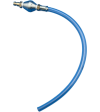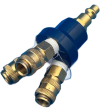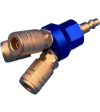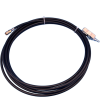
Duct cleaning might not be the most glamorous task in the world, but it’s a crucial one. Clean air ducts mean better air quality, improved HVAC efficiency, and a healthier environment for everyone involved. But like any specialized job, duct cleaning requires skill, knowledge, and the right training. In this blog post, we’ll explore how to train your team for efficient duct cleaning operations, drawing on historical context, current trends, and insights into the future.
The Importance of Duct Cleaning
Before diving into training, it’s essential to understand why duct cleaning matters. HVAC systems are the lungs of buildings, circulating air throughout residential, commercial, and industrial spaces. Over time, these systems can become clogged with dust, allergens, and other debris, reducing efficiency and potentially leading to health issues.
Historical Context
Duct cleaning is not a new concept. The importance of maintaining air quality dates back to ancient Rome, where aqueducts and plumbing systems were regularly maintained to ensure clean water and air. Fast forward to the 20th century, the rise of central heating and air conditioning systems brought duct maintenance to the fore. As awareness of indoor air quality grew, so did the demand for efficient duct cleaning services.
Current Trends
Today, the duct cleaning industry is booming, driven by heightened awareness of air quality issues and an increased focus on energy efficiency. The global HVAC cleaning services market is projected to grow significantly, with innovation and technology playing a critical role in shaping its future.
Future Implications
As we look to the future, sustainable practices and technological advancements are likely to dominate the duct cleaning landscape. From eco-friendly cleaning agents to robotic cleaning systems, the industry is poised for transformation. Training teams to adapt to these changes will be crucial for maintaining a competitive edge.
Training Your Team: A Step-by-Step Guide
Training an effective duct cleaning team involves several key steps. From understanding the basics to embracing new technologies, here's how to get started:
1. Start with the Basics
Every successful training program begins with a solid foundation.
-
Understanding HVAC Systems: Begin by ensuring your team understands how HVAC systems work. This includes knowledge of different components, such as filters, coils, and ductwork. A clear understanding of how these parts function together is crucial for effective cleaning.
-
Health and Safety Standards: Safety should always be a priority. Train your team on health and safety standards specific to duct cleaning, including the use of personal protective equipment (PPE) and safe handling of cleaning agents.
2. Provide Hands-On Training
Theory is essential, but practical experience is invaluable.
-
On-Site Training: Allow team members to shadow experienced technicians during real-world jobs. This hands-on experience helps them understand the nuances of duct cleaning that aren’t always covered in textbooks.
-
Simulated Scenarios: Use simulations to train your team in a controlled environment. This can include mock setups of different HVAC configurations to practice cleaning and troubleshooting.
3. Emphasize Customer Service
Duct cleaning is as much about technical skill as it is about customer interaction.
-
Communication Skills: Train your team on effective communication. This includes explaining the cleaning process to clients, addressing concerns, and providing clear post-cleaning reports.
-
Customer Satisfaction: Encourage a customer-first approach. Satisfied clients are more likely to return and recommend your services to others.
4. Incorporate Technology
Technology is revolutionizing the duct cleaning industry. Stay ahead of the curve by incorporating the latest tools and techniques into your training program.
-
Robotics and Drones: Introduce your team to robotic duct cleaning systems and drones. These technologies can access hard-to-reach areas, providing thorough cleaning with minimal disruption.
-
Data Analytics: Leverage data analytics to assess cleaning efficiency and identify areas for improvement. Train your team to interpret data insights and apply them to enhance service quality.
5. Encourage Continuous Learning
The duct cleaning industry is constantly evolving. Encourage your team to stay updated with industry trends and best practices.
-
Workshops and Seminars: Organize or encourage attendance at industry workshops and seminars. These events provide opportunities to learn from experts and network with peers.
-
Certifications and Courses: Promote further education through certifications and courses. This not only enhances skills but also boosts team morale and confidence.
Real-World Scenarios: Lessons in Duct Cleaning Training
Let’s delve into some real-world scenarios that illustrate the importance of comprehensive duct cleaning training.
Scenario 1: The Case of the Clogged Ducts
A commercial office building was experiencing poor air circulation and increased energy bills. Upon inspection, the HVAC system was found to be clogged with construction debris from recent renovations. The team tasked with cleaning faced challenges due to the complex layout of the ductwork.
Training Insight: This scenario underscores the importance of training teams in handling unexpected challenges. Simulated training and on-site experience can prepare teams to adapt to unique situations, ensuring efficient problem-solving.
Scenario 2: The Rise of Robotic Cleaners
A duct cleaning company invested in robotic cleaning technology to enhance efficiency. While the technology promised faster cleaning times and better access to tight spaces, the team initially struggled to operate the new equipment effectively.
Training Insight: Incorporating technology into your operations requires comprehensive training. Teams need to be comfortable with new tools and understand their capabilities to maximize their potential. Regular workshops and hands-on training sessions can ease the transition to technology-driven cleaning solutions.
Scenario 3: The Eco-Friendly Approach
A growing trend in the industry is the use of eco-friendly cleaning agents. A company decided to switch to green products, but some team members expressed concerns about their effectiveness.
Training Insight: It's crucial to educate your team about the benefits and proper use of eco-friendly products. Highlighting case studies and providing evidence of their effectiveness can help alleviate concerns and foster a greener approach to duct cleaning.
Balancing Tradition and Innovation
As the duct cleaning industry evolves, finding the balance between traditional methods and innovative approaches is key. Let’s explore how this balance can be achieved in training programs:
Traditional Methods
-
Knowledge Transfer: Experienced technicians possess invaluable knowledge. Encourage them to mentor newer team members, sharing tips and tricks that have stood the test of time.
-
Proven Techniques: Certain manual cleaning techniques remain effective and should be included in training programs. These techniques often serve as the foundation for more advanced methods.
Innovative Approaches
-
Embracing Change: Foster a culture of adaptability. Encourage your team to embrace new technologies and methodologies, while understanding their roots in traditional techniques.
-
Continuous Evaluation: Regularly assess the effectiveness of your training program. Solicit feedback from your team and clients to ensure that both traditional and innovative methods are being effectively integrated.
The Future of Duct Cleaning: What Lies Ahead?
As we look to the future, several trends and developments are poised to shape the duct cleaning industry:
Sustainability
With increasing awareness of environmental issues, sustainability is becoming a priority. Duct cleaning companies are exploring eco-friendly products and processes to minimize their carbon footprint. Training programs need to emphasize sustainable practices and their benefits.
Advanced Technologies
The integration of advanced technologies, such as AI and IoT, is set to revolutionize HVAC systems and duct cleaning. These technologies promise greater efficiency, predictive maintenance, and improved air quality. Training teams to use these innovations will be crucial for staying competitive.
Health Focus
Post-pandemic, there is a heightened focus on indoor air quality and hygiene. Regular duct cleaning is a critical component of maintaining healthy indoor environments. Training programs must emphasize the health benefits of duct cleaning, both for clients and technicians.
Conclusion
Training your team for efficient duct cleaning operations requires a multifaceted approach. By starting with the basics, providing hands-on experience, incorporating technology, and fostering continuous learning, you can build a team that is skilled, adaptable, and ready to meet the challenges of the evolving duct cleaning industry.
As we move forward, balancing traditional methods with innovative techniques will be key. Embracing sustainability, advanced technologies, and a focus on health will ensure that your team remains at the forefront of the industry. Remember, a well-trained team is not only a company's greatest asset but also a champion for clean air and healthy environments. Here's to cleaner ducts and brighter futures!












Write a comment